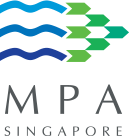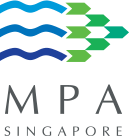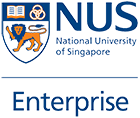Man overboard in Port waters
Smart Shipping
BACKGROUND
Man overboard (MOB) incidents pose significant risks in port waters, where numerous vessels navigate through crowded and often complex environments. Despite safety protocols and regulations, such incidents can occur due to various factors such as human error, adverse weather conditions, or equipment failure. Prompt and effective response is critical to minimizing the risk of fatalities or injuries in these situations. However, traditional methods of responding to man overboard incidents in port waters may be inadequate, as they rely heavily on manual observation and communication, which can be slow and prone to errors.
Man overboard incidents in port waters have always been a challenge despite having lifejackets available for use. A Personal Locator Beacon (PLB) is worn by MPA inspectors as an additional accessory to the lifejackets for easy rescue. These measures, while helpful, highlight the ongoing need for innovative solutions to further enhance response capabilities and improve overall safety in port waters. How might we develop solutions to better manage man overboard situation in port waters?
SIGNIFICANCE OF PROBLEM
Man overboard (MOB) incidents represent a critical safety concern within maritime operations, particularly in port waters. Factors such as adverse weather conditions, equipment malfunctions, and human error contribute to the occurrence of MOB incidents, highlighting the need for comprehensive solutions to enhance detection, response, and prevention efforts. Addressing this problem is paramount to ensuring the safety and well-being of individuals working in maritime environments and minimizing the potential for fatalities and injuries associated with MOB incidents.
There are several factors which can lead to MOB:
- Lack of knowledge and safety awareness, maintenance (pilot ladder not checked by crew before deploying, etc.)
- Rough weather (b winds, choppy waters, etc.)
- Incompliant pilot transfer arrangements (snapped pilot ladder, no proper securing of pilot ladder to ship’s side, wrong ladder used, etc.)
- Poor judgement/ practice (missed step while transferring, boat driver fails to move away when person is climbing on the ladder, person climbing pilot ladder with bulky luggage, person refuse to wear lifejacket, etc.)
- Lack of training or people with acrophobia, or people with physical/mental fatigue.
- Manual intervention required to activate the PLB (i.e. deploy antenna and switch on the PLB when person in water).
- PLB signal (GPS only) unable to be picked up (by Vessel Traffic Management System, by vessels, etc.)
- Below are some cases extracted from WSH Case Studies year 2020 Working In and Around Water.
- Worker fell from height after rope ladder broke.
- Worker fell into sea while attempting to climb ladder to board a barge.
- Worker drowned after falling into water.
- Worker fell into the sea when gangway tipped over.
- Worker fell into the sea while moving from vessel-to-vessel.
POTENTIAL MARKET SIZE
- Applicable to anyone whenever they are over water in Singapore, some examples as below:
- Port Inspectors, Flag and Port State Control Officers, Port Chemists, etc
- Other Government officers (Police Coast Guard, SCDF Marine, etc)
- Marine Pilots
- Shipyard workers, shore technicians
- Vessel crew, visitors, bunker surveyors, class surveyors/ auditors, radio surveyors, etc.
- Private and leisure activities (Launch boats, Yacht clubs, kayaking, jet skis, etc.)
- Members of the public who visit vessels in the Port of Singapore.
EXISTING EFFORTS
- MPA lifejackets are of the twin chamber buoyancy featuring a fully automatic CO 2 firing mechanism to provide buoyancy of 275N with a reserve compartment that can be deployed manually as back up.
- These lifejackets are also fitted with additional Automatic Identification System Personal Locating Beacon (AIS-PLB) for keeping track of MOB position whilst recovery is carried out.
- The AIS-PLB is automatically deployed and signal capable of being picked up by vessels, Vessel Traffic Management, etc. Signals are transmitted via AIS, integrated DSC (Digital Selective Calling) transmitter and GPS (Global Positioning System).
SOLUTION SUCCESS PARAMETERS
- Cost effective
- Easy to use
- Lightweight
POTENTIAL SOLUTION SPACES
- Super lightweight lifejackets with back-up inflation and AIS-PLB despite any conditions.
- Lifejacket with propulsion means (for MOB to escape when trapped in water under vessel).
- Alternative means of boarding vessel.
- Installation of siren alarm in the lifejacket and to be activated when waterborne.
- New type of material for pilot ladders instead of the traditional manila ropes as required by current regulations.



